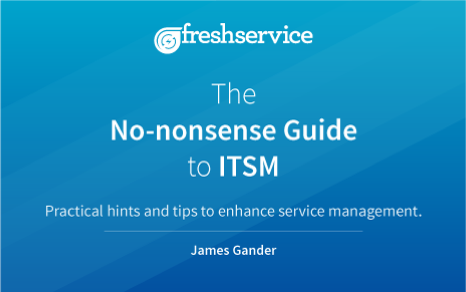What Are the Skills & Qualifications of a Problem Manager?
Problem managers need a diverse toolbox of skills, knowledge, experiences, and relationships to be successful. Key project management skills include:
Problem-solving skills
Critical thinking and root-cause analysis skills are the most important skill sets for problem managers. They must be able to step back, look at a problem logically, apply intuition, and know who to engage to resolve the issue. They must also be able to handle ambiguity. Problems are not always clear, and red herrings may appear during the resolution process. Good problem-solvers can recognize these and carefully assess them before dedicating time to researching possible dead-ends.
Technical knowledge
Problem managers serve as translators between the business and IT. Thus, they must possess basic ITSM skills and have a good understanding of ITIL best practices. They should also understand—at a high level—the technical aspects of the problems they manage. This doesn’t mean they must be technical experts in every aspect of IT. It is more important to know where to access that information and who the subject matter experts are in each area of the business and the IT department.
Business knowledge
To assess and prioritize the work on problems, the problem manager must have a good understanding of the business. To effectively manage a problem queue, they must know the business’ goals and priorities, who the customers are, and how the business delivers value to those customers.
Data and statistical analysis experience
Good problem managers have analytical minds. They spend a considerable amount of effort understanding incidents, reviewing reports, and analyzing data to understand the cause and effect of different situations. They also need to be able to prioritize problems, which requires them to look at the cost of each outage, the disruption to the customer, and the effects on financial performance. Then they can weigh these statistics against the cost of providing a solution to the problem.
Risk management experience
Risk management is an important part of project management roles and responsibilities. Project managers must be able to quickly assess the risks of taking no action or implementing any number of possible solutions. Often, there is no perfect solution to a problem, and fixing one issue may cause another. Being able to determine which solution is the lesser of two evils is the mark of a good problem solver.
Scaling the Problem Management Function
Every business has tech problems, and thus every organization needs a problem manager. Not every organization can afford a full-time problem management team or even a dedicated individual. However, the role can be adapted to fit each business’s needs.
Depending on a company’s size and needs, the problem manager could be:
Part-time responsibility
Small businesses might not have the luxury of a dedicated problem manager, but it is still essential that one person be responsible for problem management. The job can be a part-time responsibility, and it could be almost anyone in the IT department.
There is one notable exception—the problem manager should not be responsible for incident management as well, because there is a conflict of interest. The incident manager is responsible for returning users to work as quickly as possible, while the problem manager must gather information to determine the root cause of the incident. If the same person performs both roles, they will spend all their time putting out fires and have no chance to focus on preventing them
One person
Many medium-sized organizations choose to assign a single person as a problem manager. This can create challenges if multiple incidents require problem management at the same time. However, this arrangement can work if the problem manager has sufficient authority to ask for the assistance of subject-matter experts.
The problem manager must also be able to delegate problems to team members in other parts of the organization. A problem manager is not there to solve the problems; their job is to delegate and manage the lifecycle of the problem.
Small team
The more problems an organization has, the more problem managers it needs. Larger organizations typically need a dedicated problem management team to share the workload of analysis and queue management.
Team members should have the skills to facilitate brainstorming sessions. They also need good critical-thinking skills and the ability to lead emerging teams in problem-solving exercises.
Large, distributed problem management function
This is probably the most common, and most successful, means of structuring problem management in a medium to large enterprise. In this model, one problem manager leads a team of trained problem solvers and facilitators, who ideally represent both business and IT units.
By having a diverse group from different departments trained in problem-solving methodologies, the organization has a pool of people available during a crisis. These problem solvers oversee different parts of the problem queue, requesting other subject-matter experts as required.
How to Become a Problem Manager
Problem management can be a lucrative and rewarding job, but it requires training, experience, and a variety of skills. A Zippia review of IT department resumes shows that most companies require problem managers to have:
-
A bachelor's degree in business, computer science, or a related technical field
-
At least 2 to 4 years of experience in problem management or related roles, such as project manager, team leader, or incident manager
-
Business, leadership, and analytical skills
On average, it takes 6 to 12 months of job training to become an ITIL problem manager. Getting a problem manager certification, such as the ITIL 4 Foundation Certificate, can help fast-track that training and give job candidates a leg up in the hiring process.
Career Growth Opportunities for Problem Managers
Being an ITIL problem manager sets one up for a variety of potential career paths. It’s a big-picture job with a wide range of responsibilities and requires the development of a diverse skill set. Over time, project managers learn more and more about technology, ITSM best practices, and the businesses they work for. This experience can make someone highly promotable.
According to Zippia, “With experience and proven success, problem managers can progress to more senior roles or even executive-level positions, such as senior information technology manager or operations program manager.”






